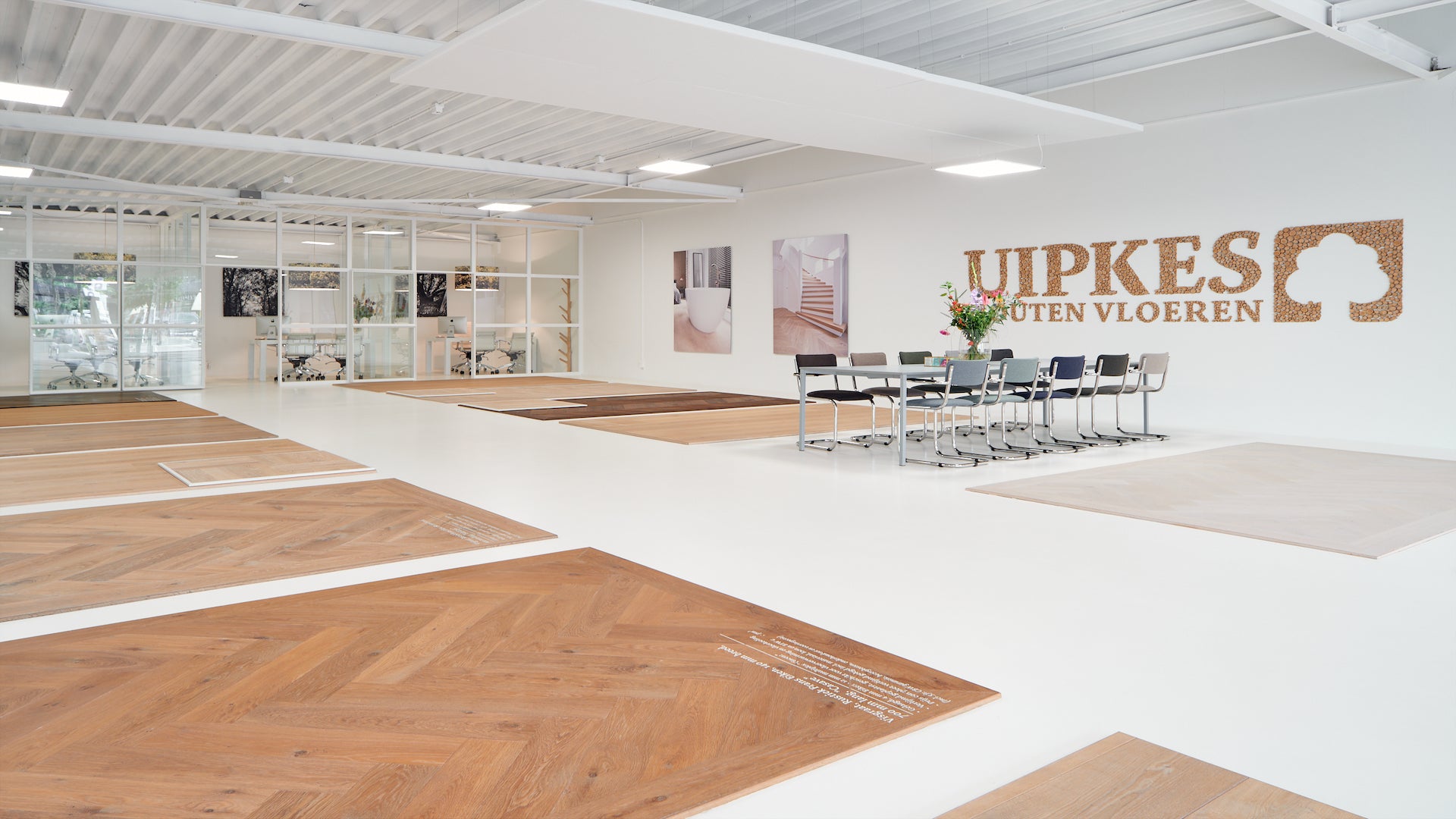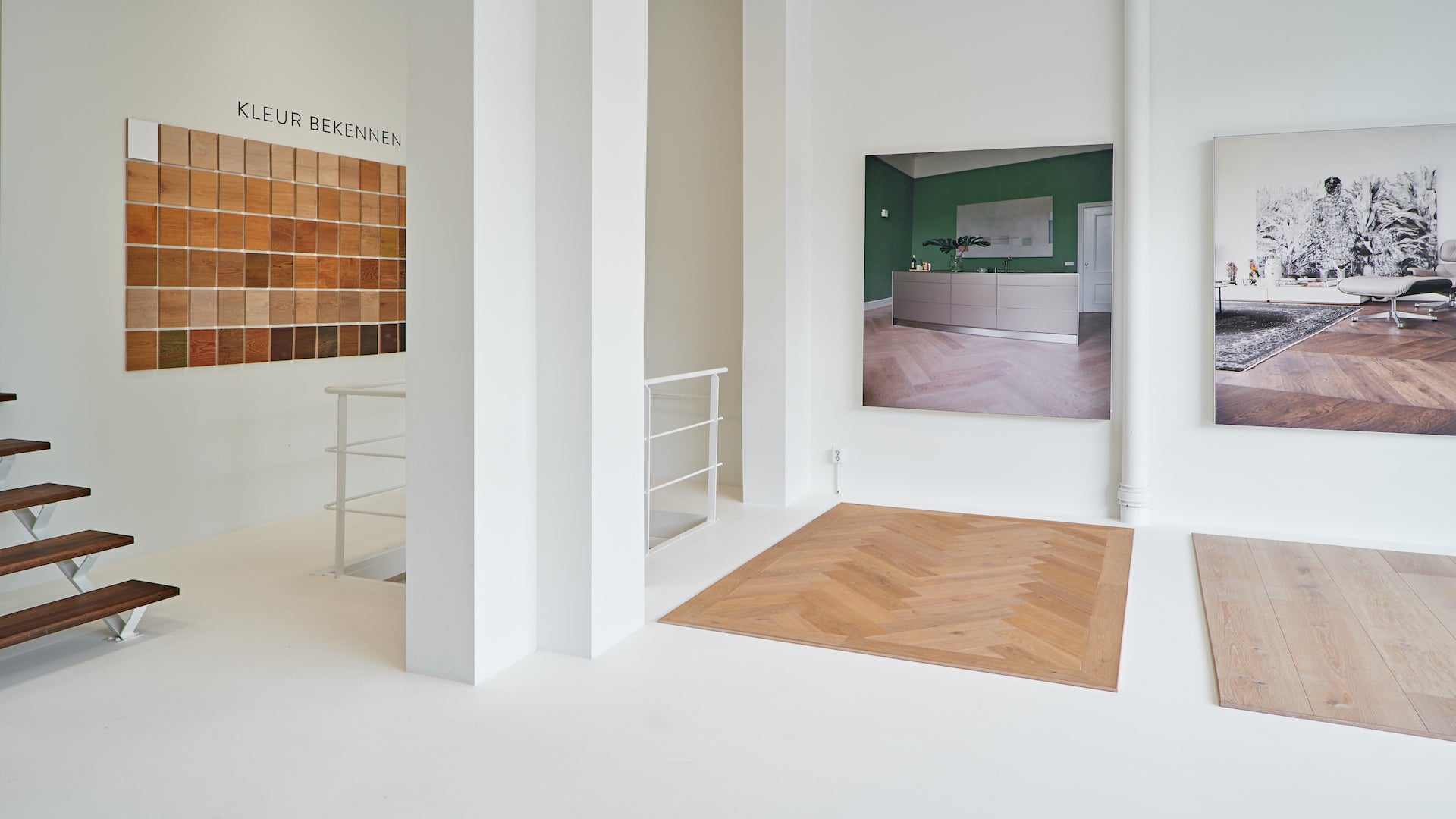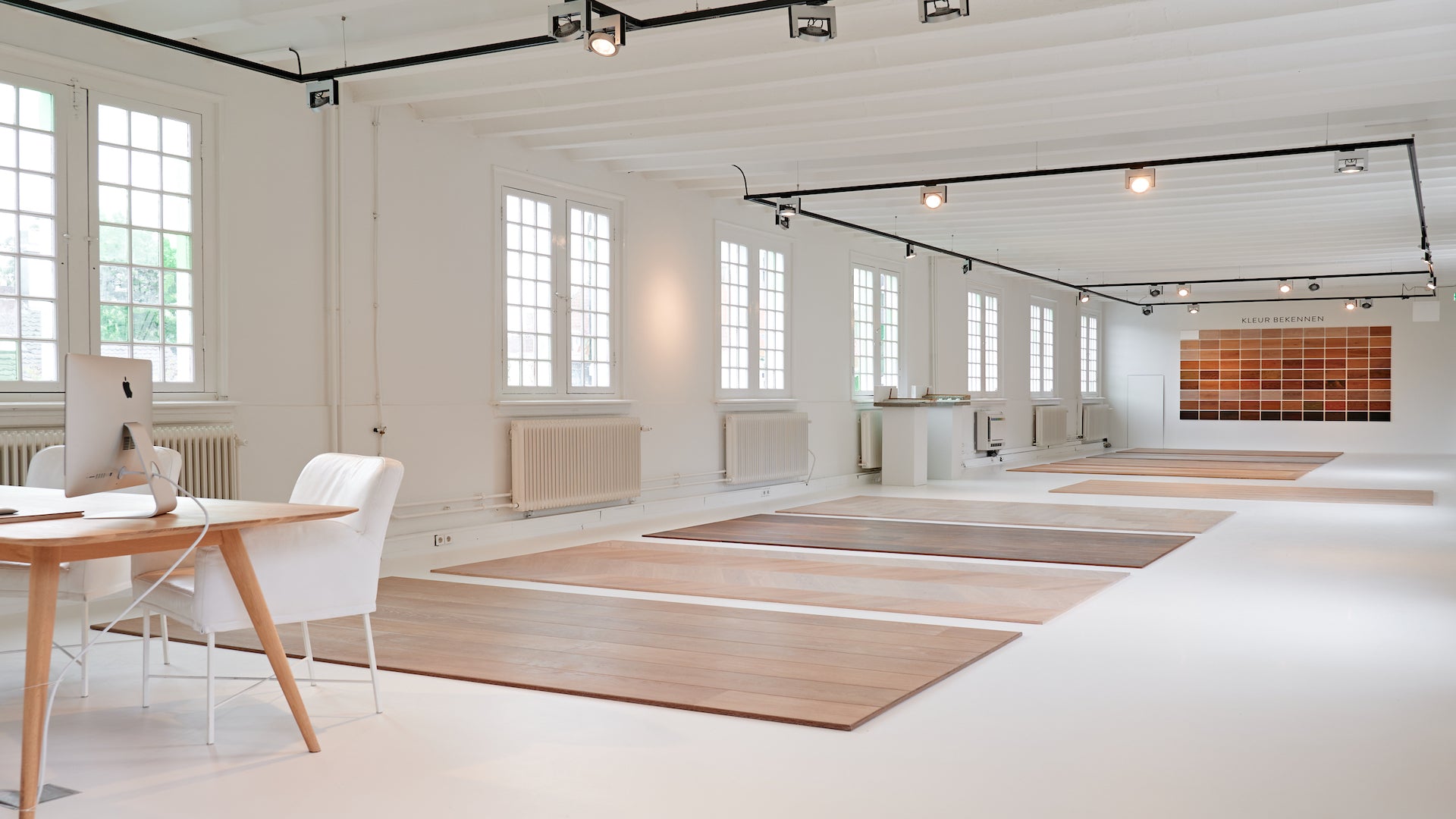Legmethoden houten vloerdelen
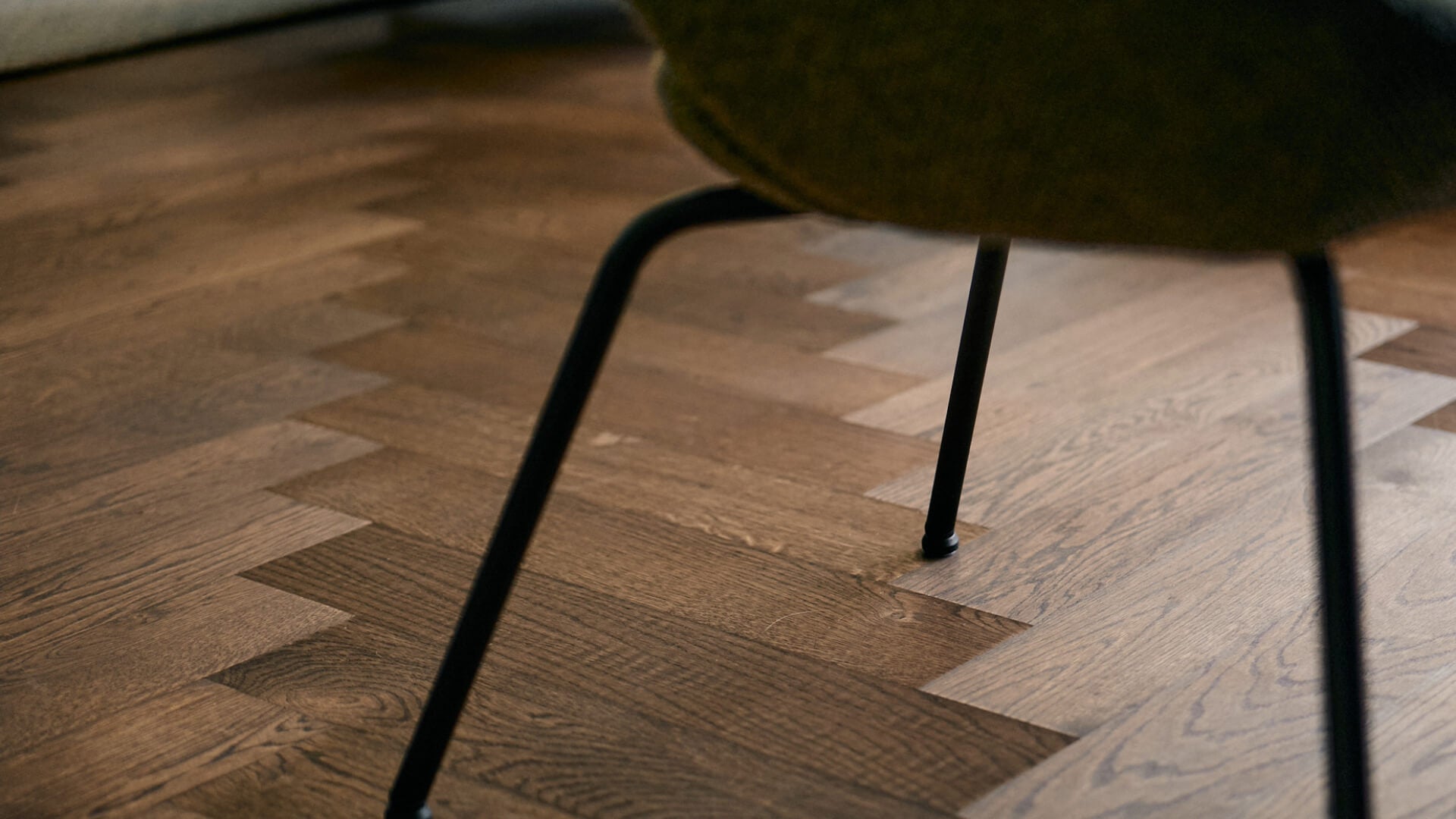
Bezoek de showroom
Wooden floorboards can be installed in different ways. A floating floor is experienced as a real wooden floor, while a glued floor has a much more massive sound.
Installation Methods
Wooden floorboards can be installed in different ways. For example, if you want a wooden floor on underfloor heating or in an apartment, this is no problem. In general, the terms floating and glued are used. Both installation methods can be used for small and large surfaces.
A floating floor is experienced as real wooden floors, while a glued floor has a much more massive sound. Engineered wood flooring on an epoxy subfloor is extremely suitable for underfloor heating . A floating floor can be used in apartments due to sufficient noise reduction.
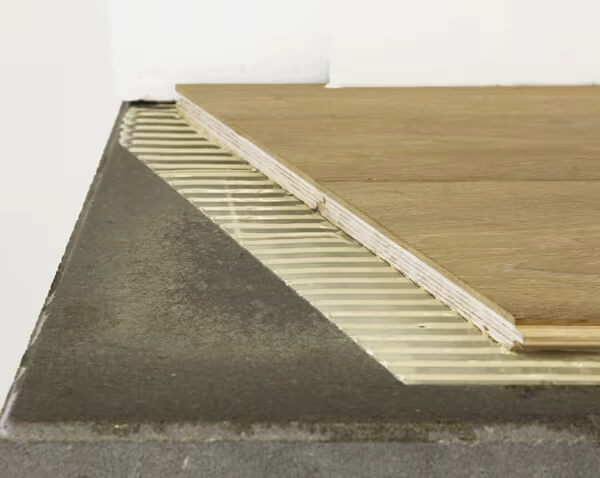
Directly glued
The engineered wood floor is glued directly to the epoxy moisture shield.
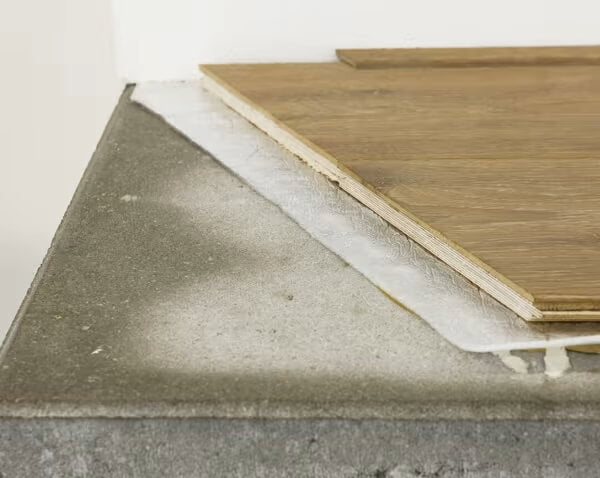
Liever thuis advies krijgen?
Knowing more?
Then visit one of our showrooms in Alphen aan den Rijn, Amsterdam or Naarden. Video calling is also possible.
To get more inspiration, you can also request our free wooden floors magazine.
Do you want to have underfloor heating milled into anhydrite or install underfloor heating in a different type of subfloor? We can install underfloor heating with or without purchasing a new wooden floor from Uipkes. Make an appointment in one of our showrooms to coordinate the project and view our beautiful wooden floors.
Showrooms
Frequently Asked Questions
What are the installation methods for a laminated wooden floor?
The installation methods for this wooden floor are similar to those of other wooden floors and include:
- Floating installation: The engineered wood floor parts are connected to each other using a click system or glue. The floor floats on top of the subfloor.
- Glued installation: The wooden floors are glued directly to the subfloor.
- Nail or screw fixing: This method is less often used with engineered wood floors due to its construction with plywood, but can be used in some cases with thicker engineered wooden floors.
Can engineered wood flooring be installed floating?
Yes, engineered wood flooring can often be installed floating. Floating installation uses a click system or glue to attach the floor parts to each other. It is important to use a suitable underlay to insulate the floor and absorb any irregularities in the subfloor.
Can I install engineered wood flooring with glue?
Yes, engineered wood flooring can also be installed with glue. The floorboards are glued directly to the subfloor. Glued installation provides a stable and secure installation, but it often requires more preparation and accuracy.
Can I install engineered wood flooring on an existing floor?
Yes, in some cases engineered wooden floors can be installed on an existing floor, such as laminate, tiles or linoleum. It is important to ensure that the existing floor is clean, level and stable before installing the parquet. It may be necessary to prepare the existing floor by leveling, cleaning or possibly removing it.
Can I install engineered wooden floors myself?
Yes, it is possible to install engineered wooden floors yourself if you are handy and have experience with do-it-yourself jobs.
